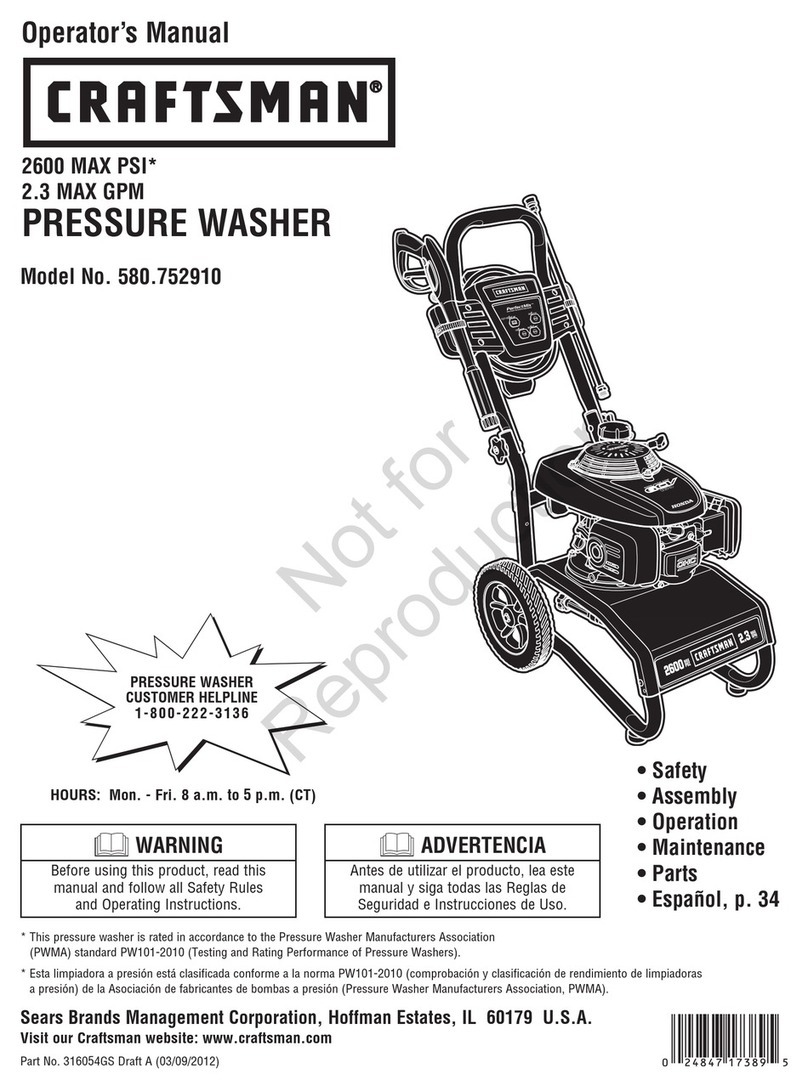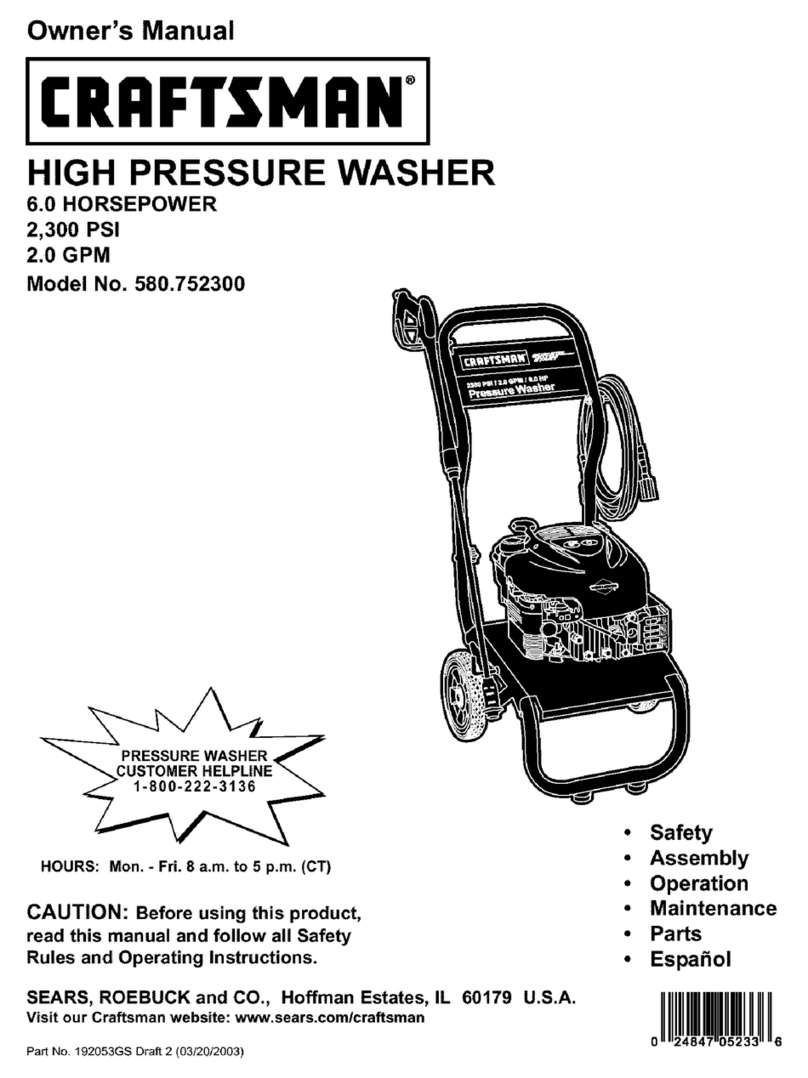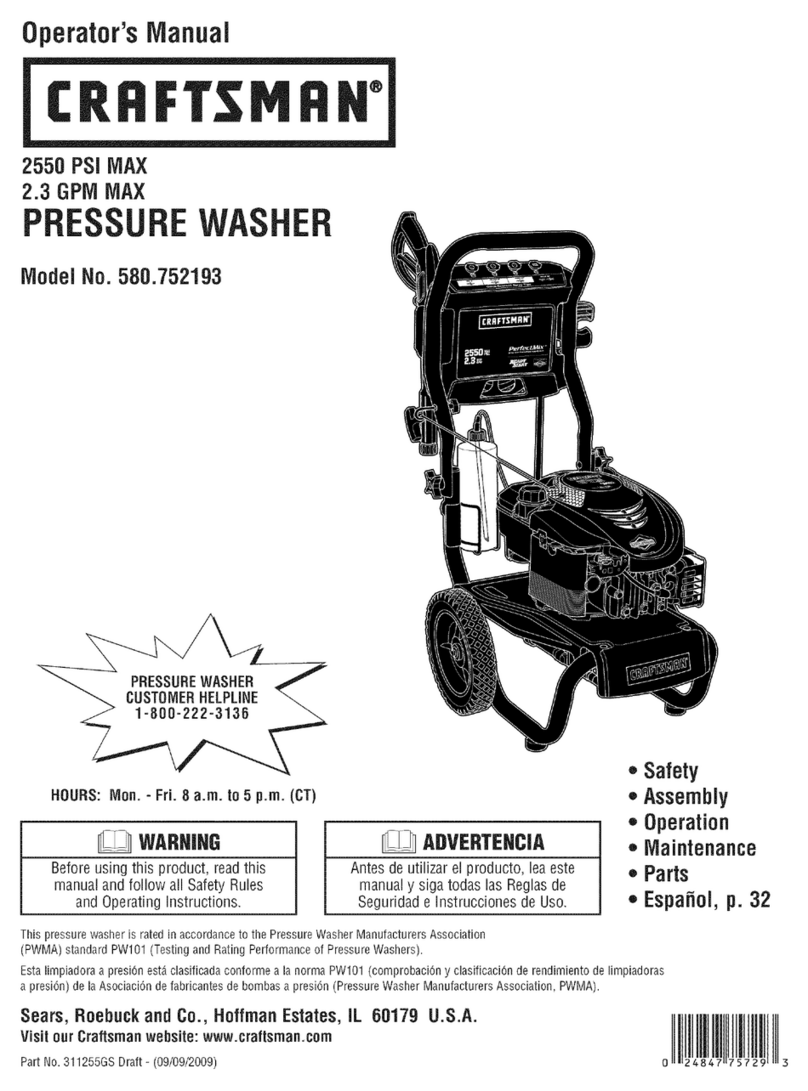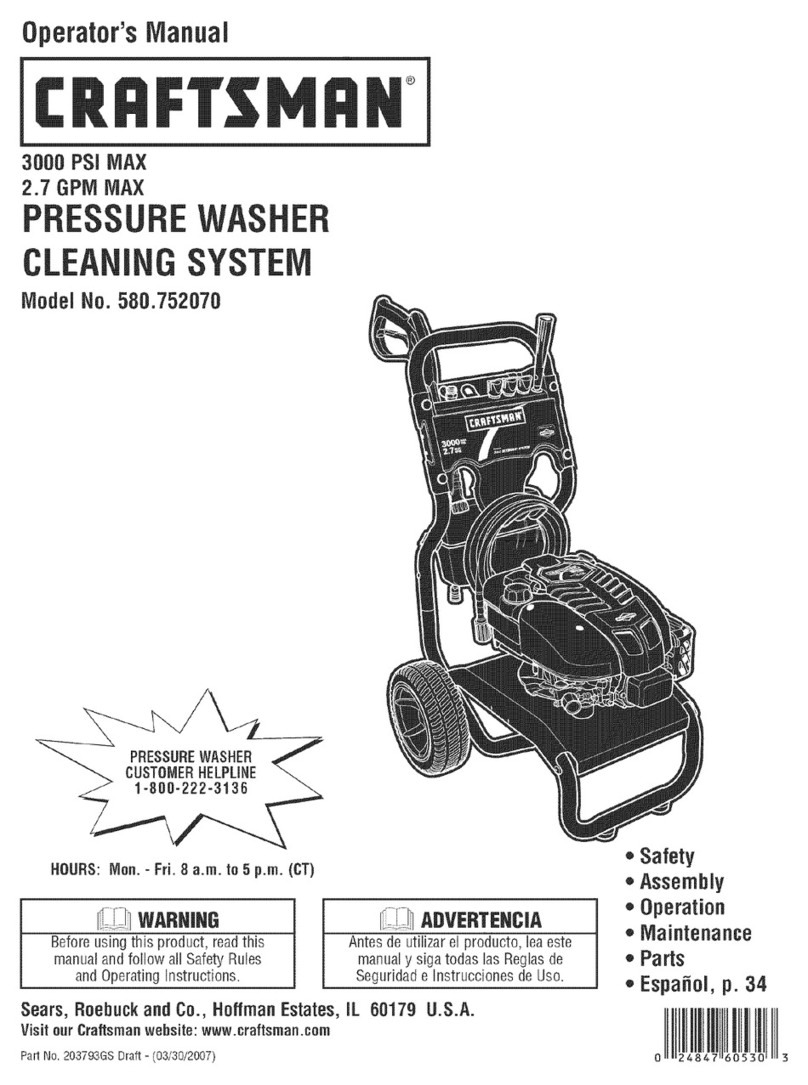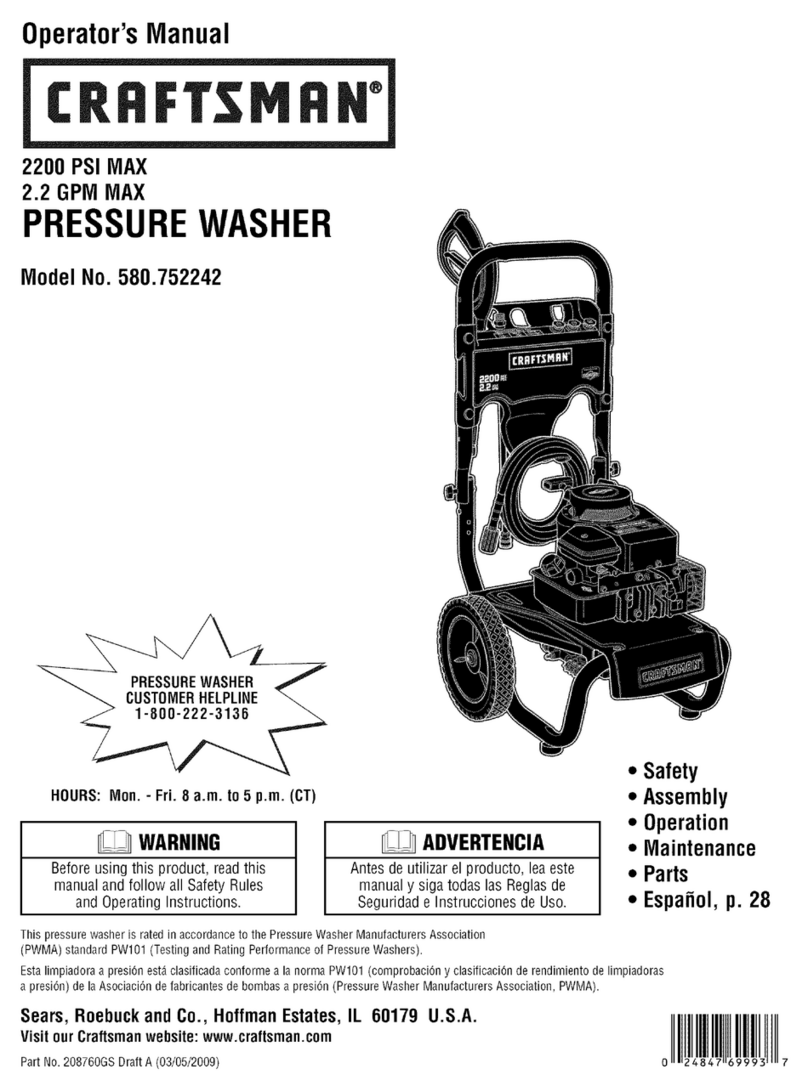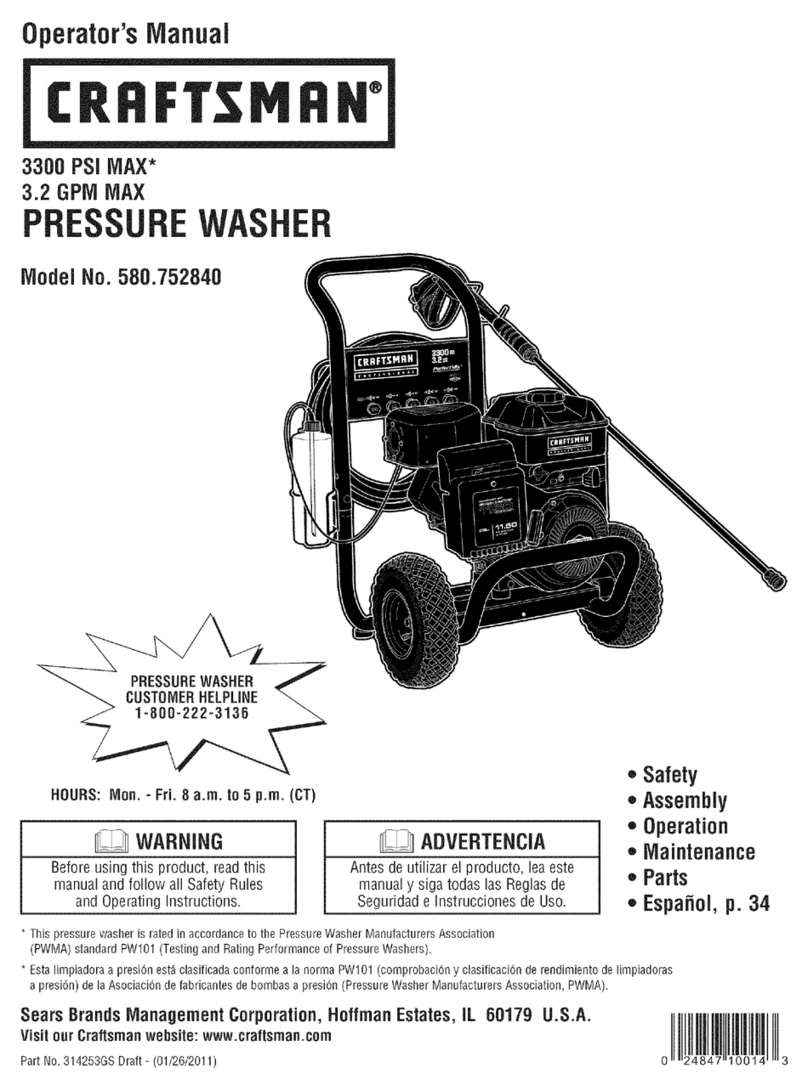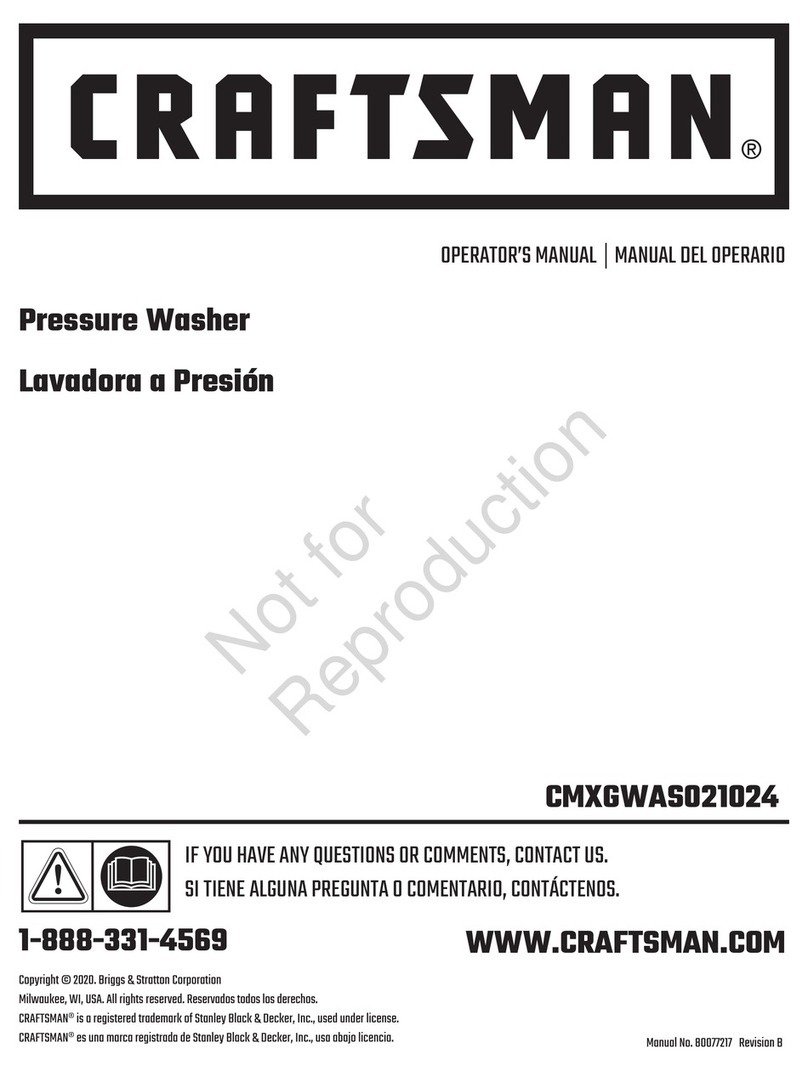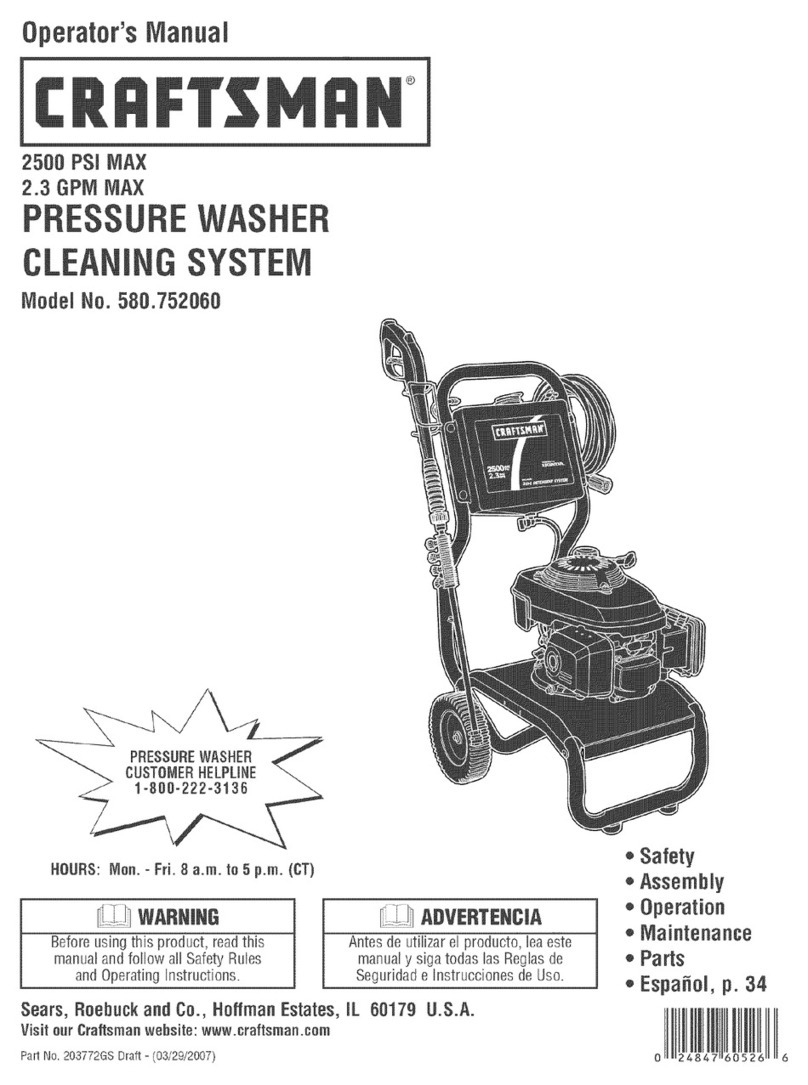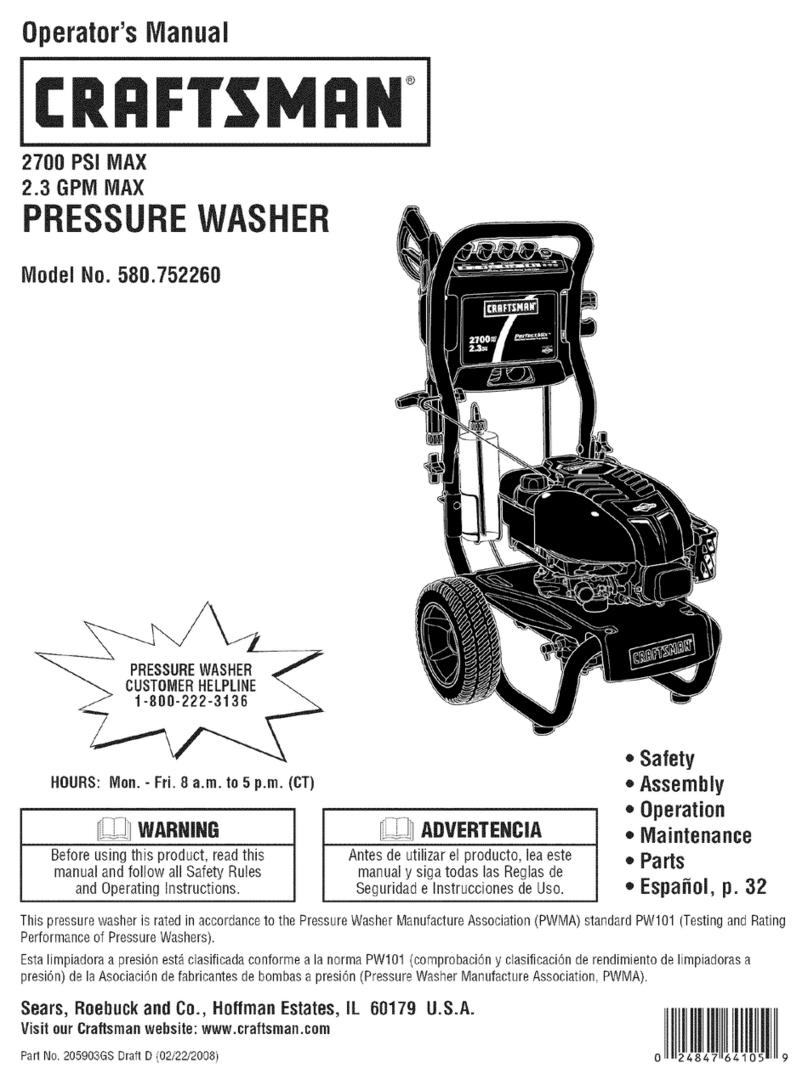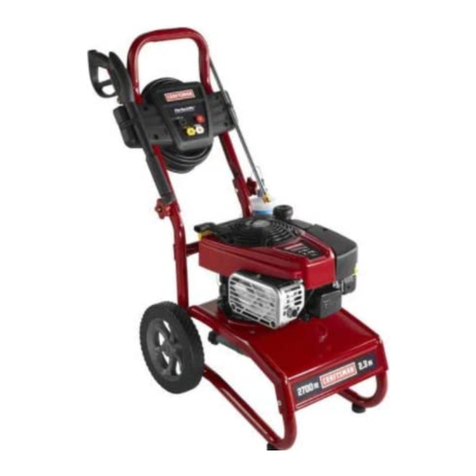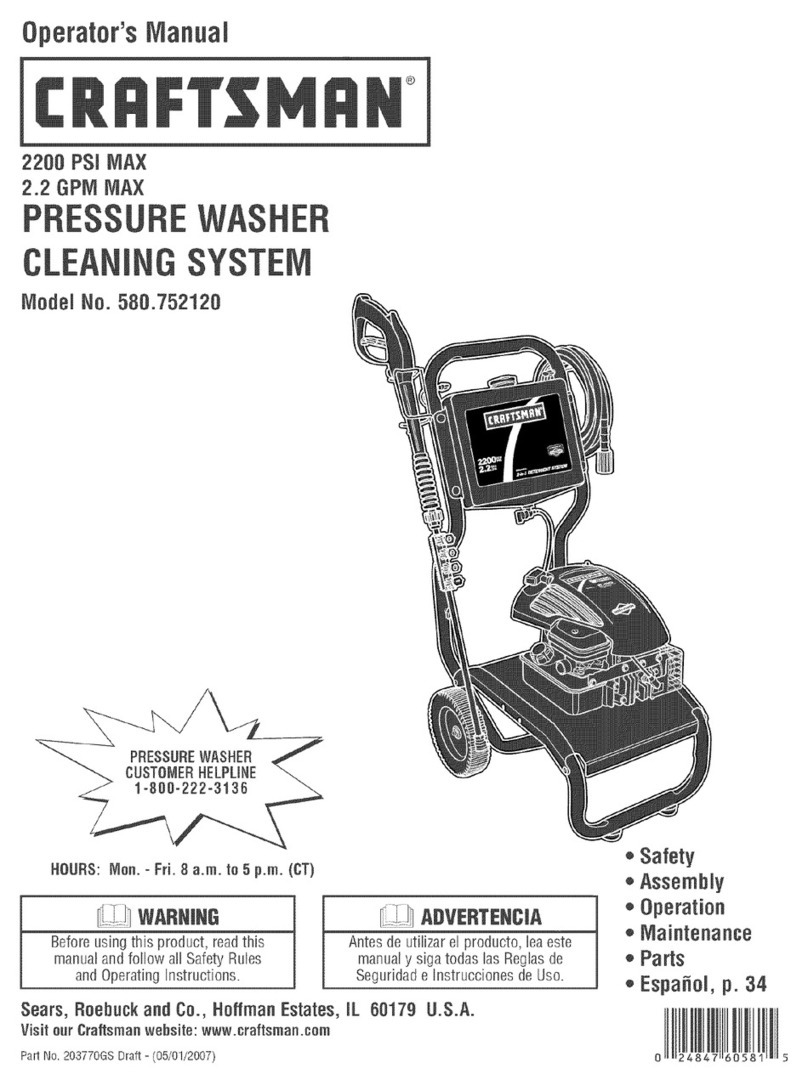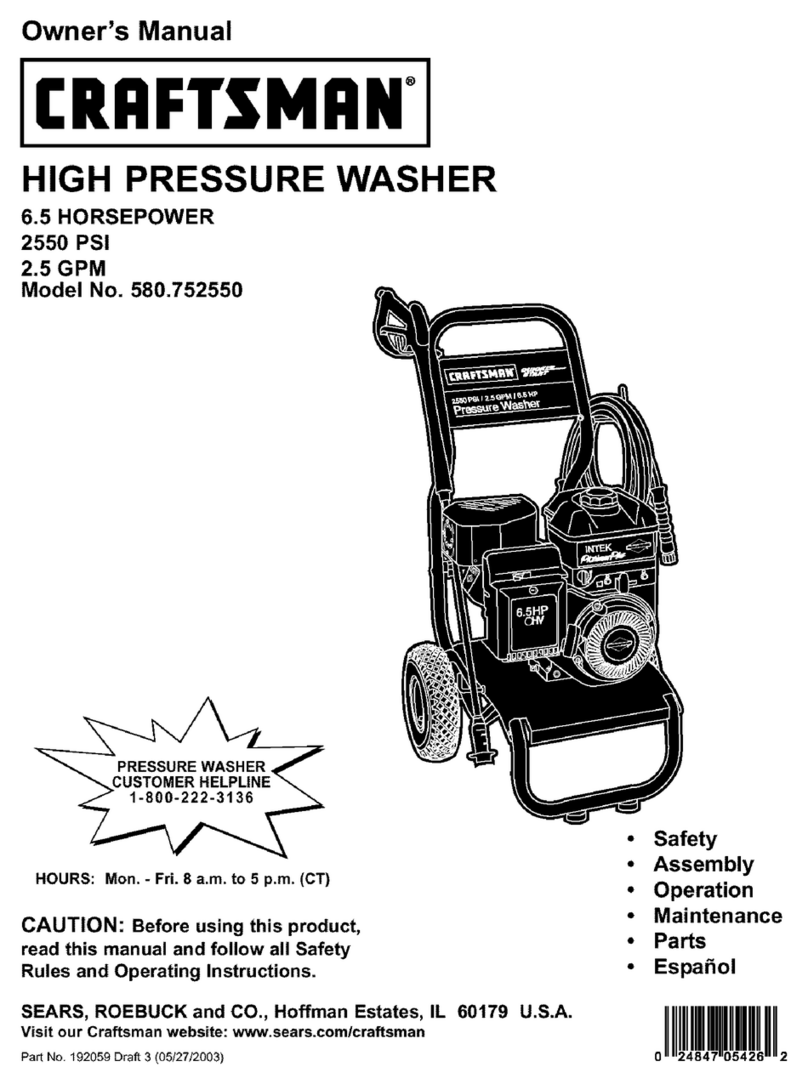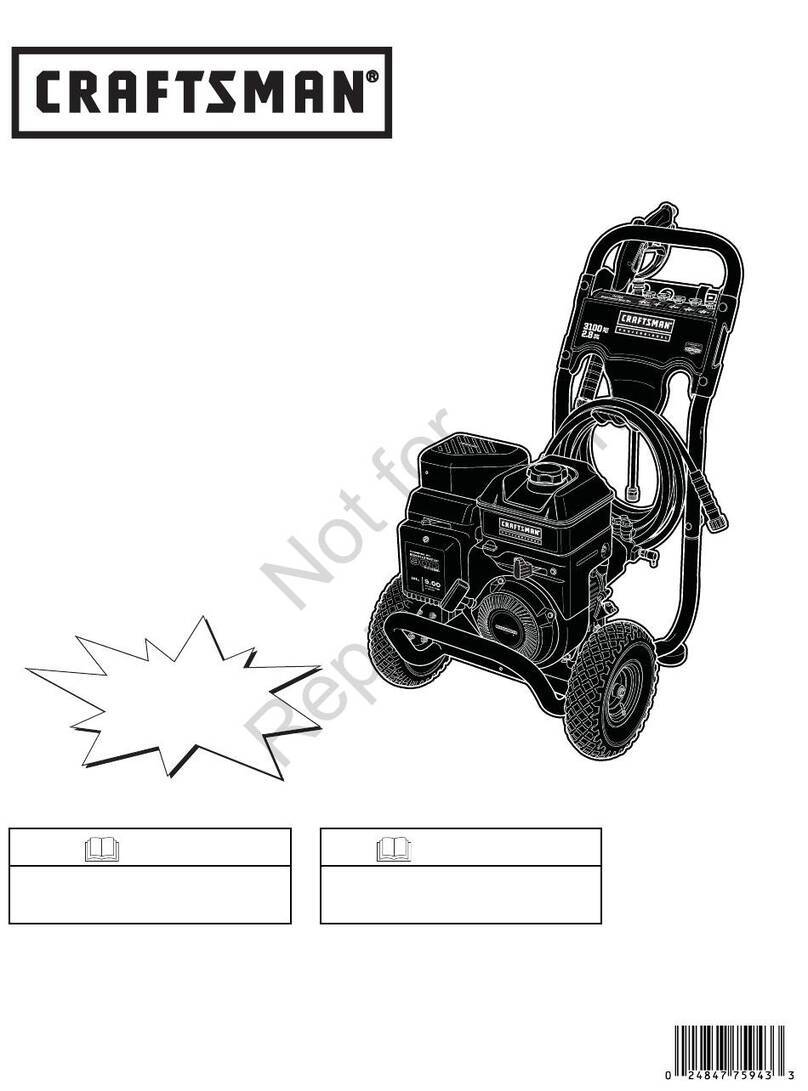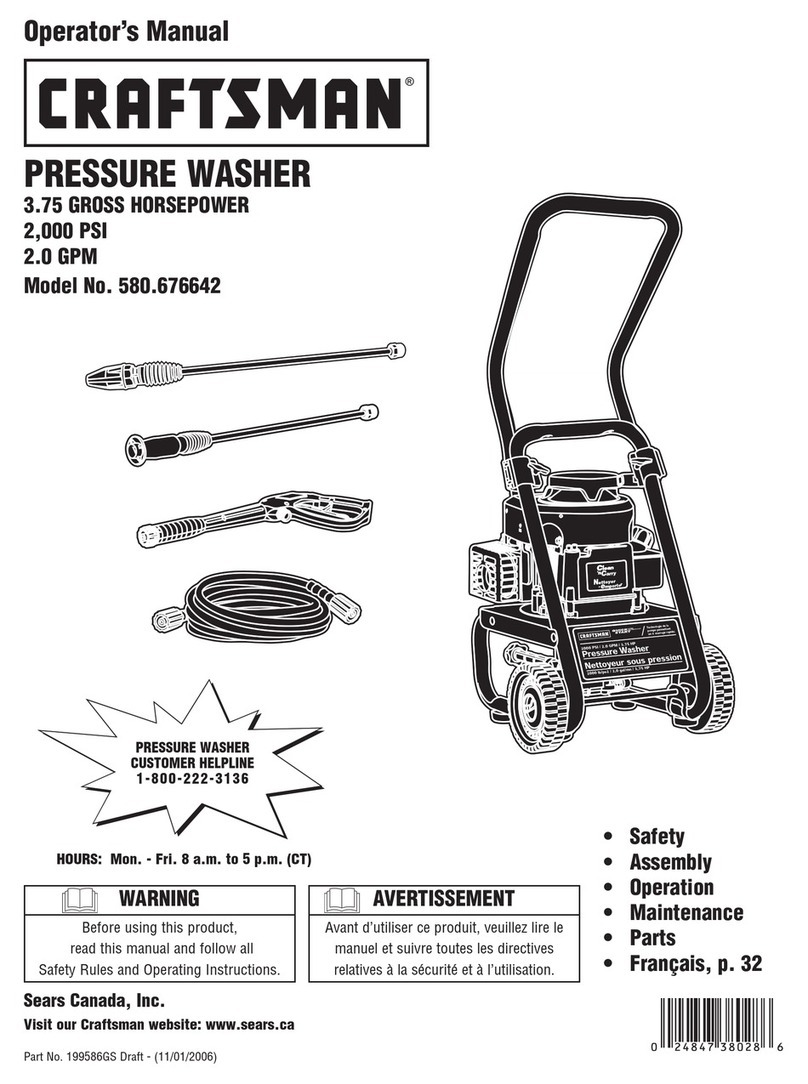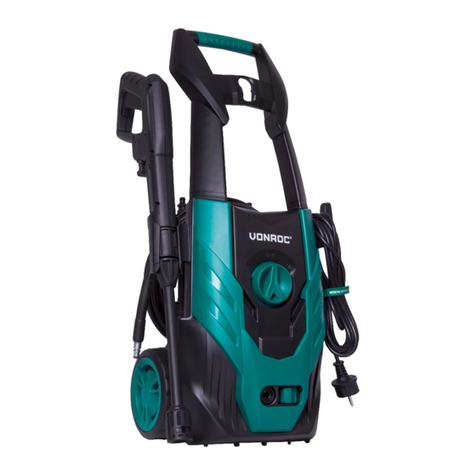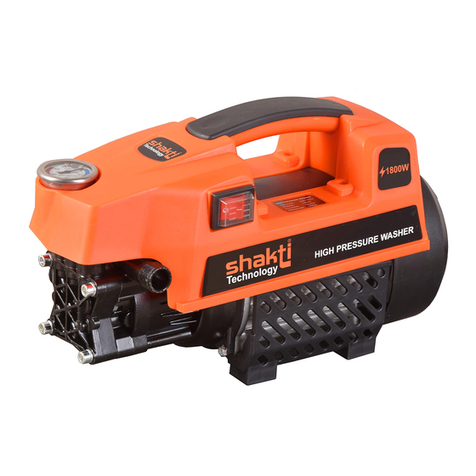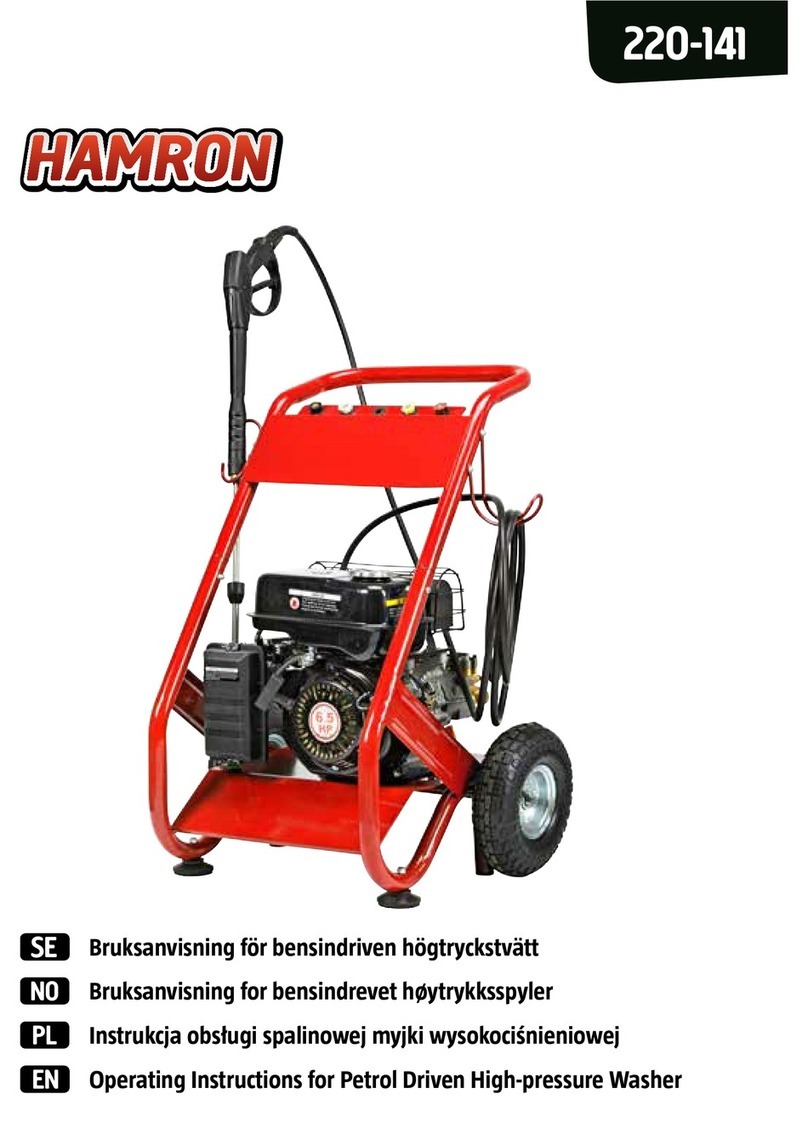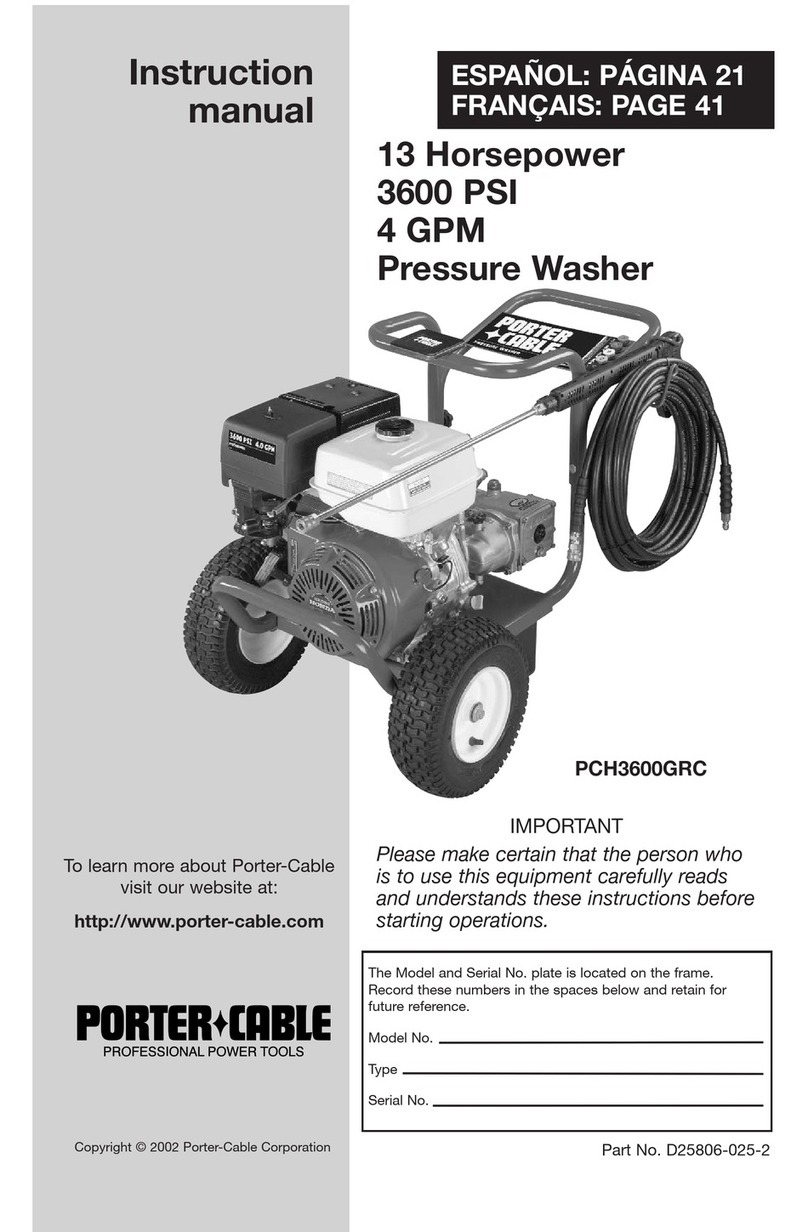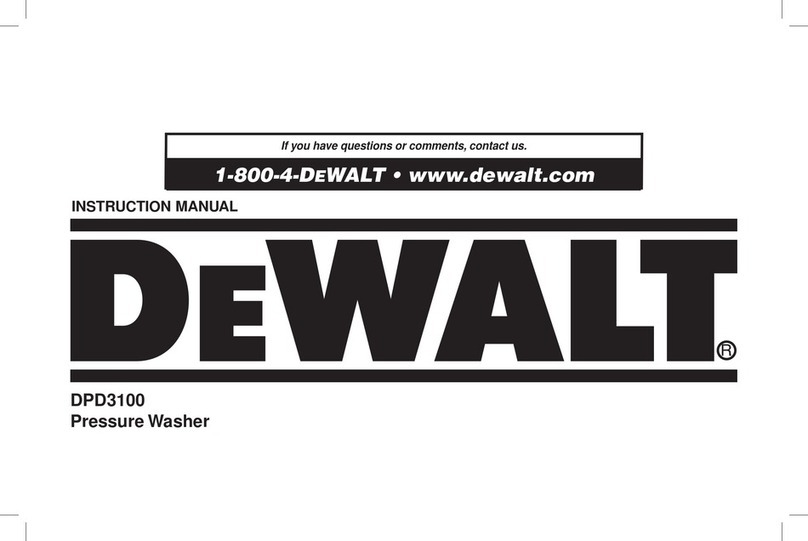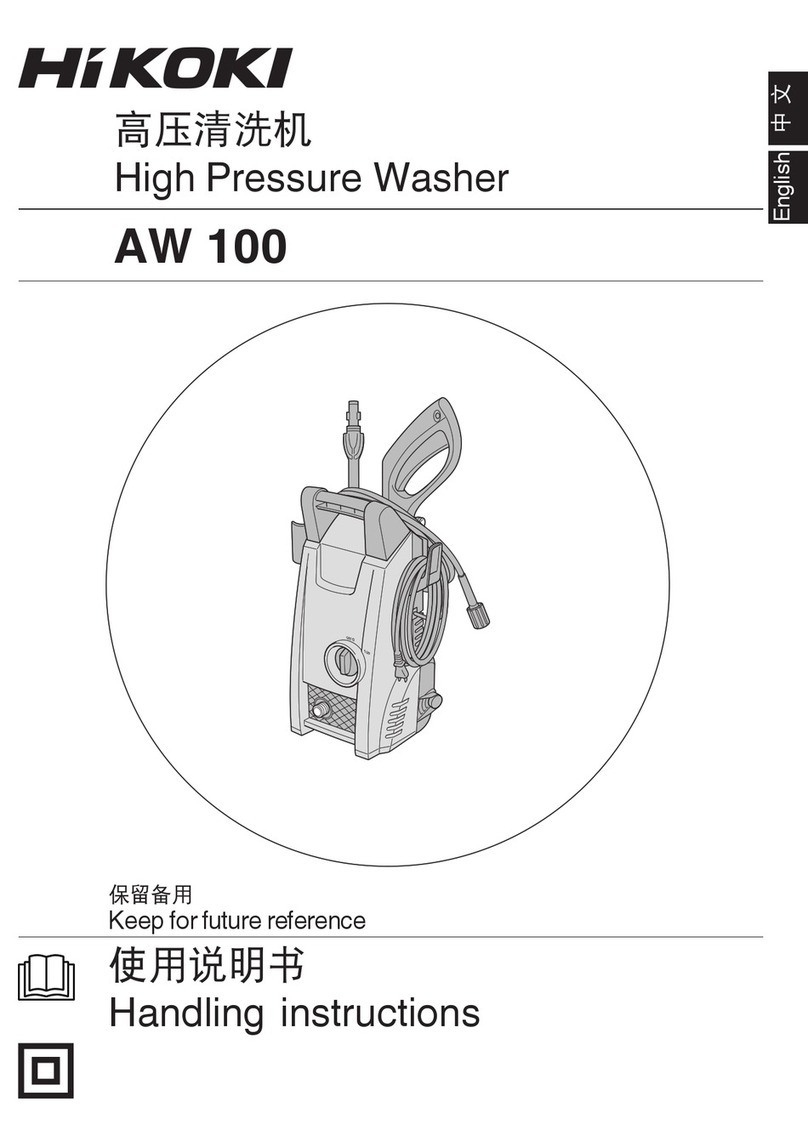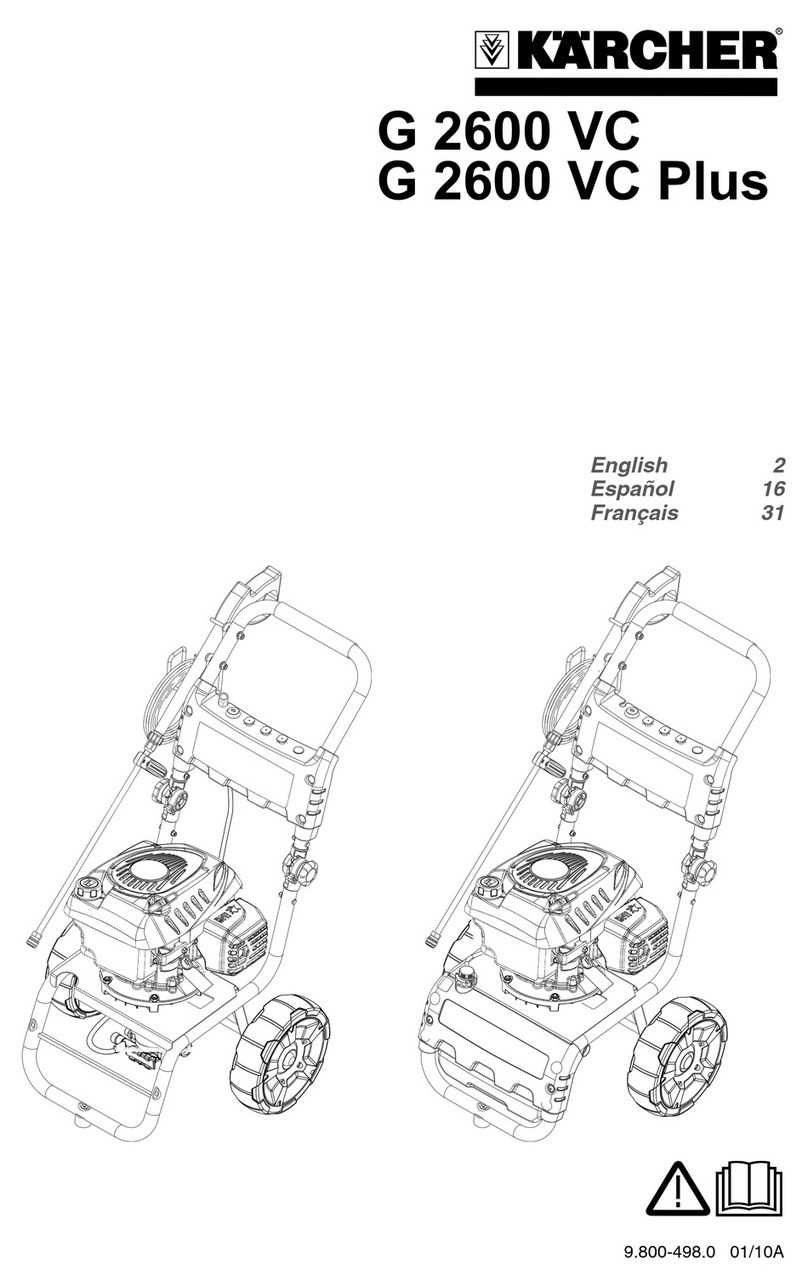
WARHIHG
Theengine exhaustfromthisproductcontains
chemicalsknownto theState of California tocause
cancer,birthdefects,or other reproductiveharm.
WARNING
Running engine gives off carbon monoxide, an
odorless, colorless, poison gas.
Breathing carbon monoxide can cause headache,
fatigue, dizziness, vomiting, confusion, seizures,
nausea, fainting or death.
Some chemicals or detergents may be harmful if
inhaled or ingested, causing severe nausea,
fainting, or poisoning.
*Operatepressure washer ONLYoutdoors.
*Keepexhaust gasfrom entering a confined areathrough
windows, doors, ventilation intakes,or other openings.
*DO NOTstart or run engine indoors or in an enclosedarea,
evenif windows anddoors are open.
*Use a respirator or maskwhenever there is a chancethat
vapors may be inhaled.
*Readall instructions with mask so you are certain the mask will
provide the necessaryprotection against inhaling harmful
vapors.
WARNING
_¢ isk of electrocution.
Contact with power source can cause electric
shock or burn.
*NEVERspray near power source.
WARNING
Contact with muffler areacan result in serious
burns.
._ Exhaustheat/gases can ignite combustibles,structures or damagefuel tank causing afire.
* DO NOTtouch hot parts and AVOID hot exhaust gases.
. Allow equipmentto cool beforetouching.
.Keepat least 5feet (152 cm) of clearanceon all sides of
pressure washer including overhead.
.Codeof FederalRegulation (CFR)Title 36 Parks, Forests,and
Public Property require equipment powered by an internal
combustion engine to have aspark arrester, maintained in
effective working order, complying to USDAForest service
standard 5100-1C or later revision, in the Stateof California a
spark arrester is required under section 4442 of the California
Public resources code. Other states may havesimilar laws.
WARNING
,_ Fuel and its vapors are extremely flammable and
explosive.
Fire or explosion can cause severe burns or
death.
WHEN ADDINGOR DRAINING FUEL
,, Turn pressure washer OFFand let it cool at least 2 minutes
before removing fuel cap. Loosen cap slowly to relievepressure
in tank.
• Fill or drain fuel tank outdoors.
• DO NOToverfill tank. Allow spacefor fuel expansion.
• Iffuel spills, wait until it evaporatesbefore starting engine.
• Keepfuel awayfrom sparks, openflames, pilot lights, heat,and
other ignition sources.
• DO NOTlight a cigarette or smoke.
WHENSTARTING EQUIPMENT
•Ensurespark plug, muffler, fuel cap, andair cleaner are in
place.
• DO NOTcrank engine with spark plug removed.
WHEN OPERATING EQUIPMENT
*DO NOTtip engine or equipment at angle which causes fuel to
spill.
. DO NOTspray flammable liquids.
WHENTRANSPORTINGORREPAiRiNGEQUIPMENT
* Transport/repairwithfueltank EMPTYorwith fuelshutoffvalve
OFF.
.Disconnectsparkplugwire.
WHEN STORING FUEL OR EQUIPMENT WiTH FUEL iN TANK
*Store awayfrom furnaces, stoves, water heaters,clothes
dryers, or other appliancesthat havepilot light or other ignition
source becausethey can ignite fuel vapors.
WARHiHG
Starter cord kickback (rapid retraction) can result
_nbodily injury. Kickback will pull hand and arm
toward engine faster than you can let go.
Broken bones, fractures, bruises, or sprains
could result.
• NEVERpull starter cord without first relieving spray gun
pressure.
• When starting engine, pull cord slowly until resistanceis felt
and then pull rapidly to avoid kickback.
• After each starting attempt, where engine fails to run, always
point spraygun in safe direction, press red button and squeeze
spray gun trigger to releasehigh pressure.
•Firmly grasp spray gun with both hands when using high
pressure spray to avoid injury when spray gun kicks back.

